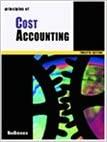Question
(Ch. 3) Cross Exchange Rate. Assume USD 1 is worth 97.364 Argentine Peso (ARS), and USD 1 is also worth 14.391 South African Rand (ZAR).
- (Ch. 3) Cross Exchange Rate. Assume USD 1 is worth 97.364 Argentine Peso (ARS), and USD 1 is also worth 14.391 South African Rand (ZAR). What is the definition of the cross rate ZARARS? How much is the cross rate ZARARS?
- (Ch. 3) Bid-Ask Spread. Next summer, you and your sister, Judy, plan to participate in the Study Abroad program. You plan to go to London, U.K. and Judy will visit Geneva, Switzerland. Both of you need to transfer your USD to the respective foreign currency right now. Here is the market data: (GBP and CHF mean the Great British Pound and the Swiss Franc, respectively.)
GBPUSD spot rate: the big figure is 1.37; market quotes are: 91/95. USDCHF spot rate: the big figure is 0.91; market quotes are: 64/68.
- What is the exchange rate that you will use to buy GBP? What is your bid-ask spread in percentage?
- What is the exchange rate that Judy will use to buy CHF? What is her bid-ask spread in percentage?
- What are the GBPCHF cross-exchange bid and ask rates, assuming there is no transaction cost, and the liquidity is very similar? (make sure you use the correct bid or ask rate). What is the bid-ask spread in percentage for GBPCHF?
- (Ch. 3) Carry Trade
- Explain carry trade.
- If the interest rates for the GBP, USD, and JPY are 6%, 4%, and 1%, respectively, and you would like to have a carry trade, which currency would you like to borrow? Why?
- If you have a carry trade, what may you earn? What risk may you have?
- What will be expected in practice if everyone in the markets is doing the same thing with you (carry trade)?
- (Ch. 4) Spot Exchange Rate Movements. Suppose you have a buy EURUSD position for some units of the EUR. You bought the EUR with the USD at St-1(EURUSD) = 1.1780 on August 30 (seven days ago). Today is September 6, with St(EURUSD) = 1.1850. What is the annualized percent change in the exchange movements in these seven days? (Annualize by multiplying 360/7)
(Ch. 4) Aggregate Effects on Exchange Rates. Assume that United States residents invest heavily in the Australian government and stocks. In addition, Australian residents invest
3.
4.
5.
heavily in the United States.
Because your firm imports goods from Australia, you are assigned to forecast the value of AUD (the Australian dollar) against the USD i.e., you forecast St(AUDUSD). Explain how each of the following conditions will affect the value of the AUD, holding other things equal. Then, aggregate all of these impacts to develop an overall forecast of the AUDs movement against the USD. (Please plot a figure to explain each condition, except for question f. No figures, no points.)
- U.S. inflation has suddenly increased substantially, while Australian inflation remains low.
- The U.S. interest rates have increased substantially, while the Australian interest rates remain the same.
- The income level in the U.S. increased substantially, while the Australian income level has remained unchanged.
- The U.S. is expected to impose a new small tariff on goods imported from Australia.
- In Australia, the recent dysfunction within the two major political parties has seen seven different Prime Ministers take office in the past decade. You expect that this situation may be going to get worse and assume Australia is not a safe haven.
- Combine all expected impacts to develop an overall forecast.
Step by Step Solution
There are 3 Steps involved in it
Step: 1

Get Instant Access to Expert-Tailored Solutions
See step-by-step solutions with expert insights and AI powered tools for academic success
Step: 2

Step: 3

Ace Your Homework with AI
Get the answers you need in no time with our AI-driven, step-by-step assistance
Get Started


